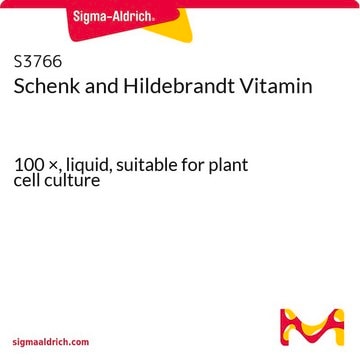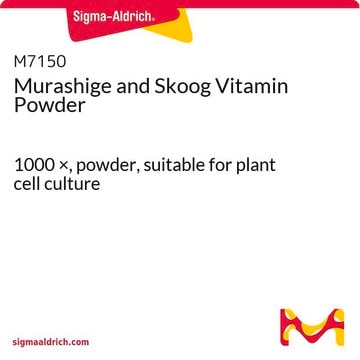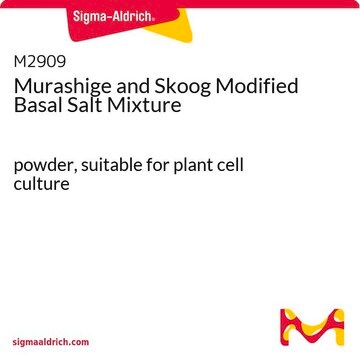G5768
Gamborg′s B-5 Basal Salt Mixture
fine powder, suitable for plant cell culture
Synonim(y):
B-5 Salt Mixture, Basal Salt Mixture, Gamborg B-5 Medium
About This Item
Polecane produkty
Postać
fine powder
Poziom jakości
metody
cell culture | plant: suitable
Zastosowanie
agriculture
temp. przechowywania
2-8°C
Powiązane kategorie
Opis ogólny
Zastosowanie
- as a constituent during the preparation of TEX buffer
- as a media to maintain potato suspension and callus cultures
- as a media in the primary-node transformation method
Wariant wzoru
Media Formulation
Ilość
Hasło ostrzegawcze
Warning
Zwroty wskazujące rodzaj zagrożenia
Zwroty wskazujące środki ostrożności
Klasyfikacja zagrożeń
Ox. Sol. 3
Kod klasy składowania
5.1B - Oxidizing hazardous materials
Klasa zagrożenia wodnego (WGK)
WGK 1
Temperatura zapłonu (°F)
Not applicable
Temperatura zapłonu (°C)
Not applicable
Certyfikaty analizy (CoA)
Poszukaj Certyfikaty analizy (CoA), wpisując numer partii/serii produktów. Numery serii i partii można znaleźć na etykiecie produktu po słowach „seria” lub „partia”.
Masz już ten produkt?
Dokumenty związane z niedawno zakupionymi produktami zostały zamieszczone w Bibliotece dokumentów.
Klienci oglądali również te produkty
Produkty
Classical plant tissue culture media developed years ago by pioneers such as Murashige, Skoog, Gamborg, and others still play a vital role in plant tissue culture research today.
Klasyczne pożywki do hodowli tkanek roślinnych opracowane wiele lat temu przez pionierów takich jak Murashige, Skoog, Gamborg i innych nadal odgrywają istotną rolę w badaniach nad kulturami tkanek roślinnych.
Nasz zespół naukowców ma doświadczenie we wszystkich obszarach badań, w tym w naukach przyrodniczych, materiałoznawstwie, syntezie chemicznej, chromatografii, analityce i wielu innych dziedzinach.
Skontaktuj się z zespołem ds. pomocy technicznej










